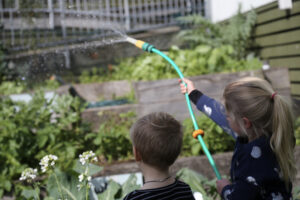Executive function skills are crucial cognitive processes that help children manage their thoughts, actions, and emotions to achieve goals. For children aged 4-7, these skills are still developing and can be nurtured through intentional activities and supportive environments.
Key Executive Function Skills
- Working Memory: The ability to hold and manipulate information over short periods.
- Inhibitory Control: The ability to control impulses and resist distractions.
- Cognitive Flexibility: The ability to switch between tasks or think about multiple concepts simultaneously.
These skills are essential for tasks such as following instructions, problem-solving, and regulating emotions.
Why Are They Important?
Developing strong executive function skills in early childhood sets the foundation for success in learning, social interactions, and overall well-being. Children with well-developed executive function skills are better equipped to handle complex tasks, adapt to new situations, and regulate themselves.
How Can We Foster These Skills?
Here are some strategies we can use to support the development of executive function skills in young children:
- Interactive Play: Activities like role-playing, board games, and puzzles encourage children to use their working memory, practice self-control, and adapt to new rules or scenarios.
- Structured Routines: Establishing consistent daily routines helps children understand what to expect and reduces anxiety, allowing them to focus on developing their executive function skills
- Mindfulness and Self-Regulation: Teaching children mindfulness techniques, such as deep breathing or guided imagery, can help them learn to manage their emotions and impulses.
- Encouraging Independence: Allowing children to make choices and solve problems on their own fosters cognitive flexibility and decision-making skills.
- Modeling Behavior: Demonstrating executive function skills through your own actions, such as planning ahead or staying calm under pressure, provides children with a clear example to follow.
Activities to Develop Executive Function Skills
- Dramatic and pretend play: Dramatic play, or pretend play, involves the opportunity for children to act out real-life situations as well as adventure stories and fairytales where children take on the roles of different characters. They can use this type of play to explore their own thoughts and feelings.
- Simon Says: This classic game helps children practice inhibitory control and follow instructions.
- Memory Games: Activities that require children to remember and recall information strengthen their working memory.
- Storytelling: Encouraging children to create and tell stories enhances cognitive flexibility and creativity as well as supporting their oral language and vocabulary.
- Creating Obstacle Courses: These physical activities require children to plan, adapt, and execute a series of movements, engaging multiple executive function skills.
By incorporating these strategies and activities into your teaching, you can create a supportive environment that nurtures the development of executive function skills in young children. Remember, the goal is to provide opportunities for practice and growth, helping children build a strong foundation for future success.
